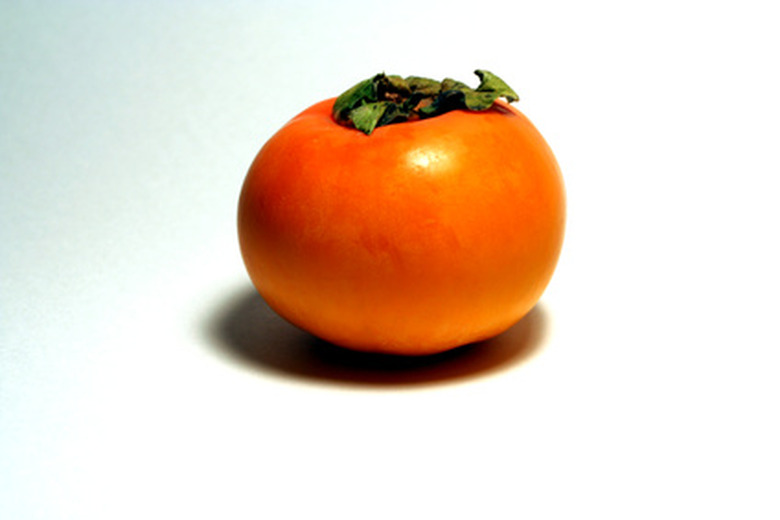Persimmon Tree Diseases & Pests
With their bright orange, glossy fruit, healthy persimmon trees are a sight to behold. Although they suffer from few pests and diseases, some cases of various fungal and insect attacks have been reported. The most notable of these is persimmon wilt, which affects trees all along the Southern part of the United States. Additionally, several animal pests favor persimmon fruit and may cause additional problems.
Persimmon Wilt
Persimmon trees throughout central Tennessee and other parts of the Southeastern United States suffer from persimmon wilt, a disease caused by the fungus Cephalosporium diospyri. Symptoms of the disease include wilted and dropped leaves. Untended cases will lead to even more serious problems, like branch death and the eventual destruction of the entire tree. Trees in groves exhibiting this problem should be burned, and uninfected trees nearby treated by painting any open cuts or wounds on the surface.
- With their bright orange, glossy fruit, healthy persimmon trees are a sight to behold.
- Persimmon trees throughout central Tennessee and other parts of the Southeastern United States suffer from persimmon wilt, a disease caused by the fungus Cephalosporium diospyri.
Leaf Spot
Another disease that infects common persimmon is leaf spot. Leaf spot, or anthracnose, is caused by the fungus colletotrichum. Although not deadly to adult trees, leaf spot does cause black spots to appear on the surface of leaves, and may sometimes affect fruit as well. It can also lead to early dropping of leaves–this is most noticeable in August, for the North, and September, for the South. Sprays containing baking soda or sulfur, or the pesticide Bordeaux mix, are commonly used to control it.
Crown Gall
Known to the scientific world as Agrobacterium tumefaciens, crown gall has sometimes been found on persimmon trees. Trees infected with crown gall develop tumors, or galls, on their branches and roots, which eventually become hard and rough. The disease hits young plants the hardest and can often annihilate them, while older plants weaken, but most often survive the infection. Like persimmon wilt, the infection spreads to open wounds on trees, so treating existing cuts and bruises on mature trees and being careful to avoid additional damage is the best treatment. Young trees that are infected may need to be destroyed.
- Another disease that infects common persimmon is leaf spot.
- Although not deadly to adult trees, leaf spot does cause black spots to appear on the surface of leaves, and may sometimes affect fruit as well.
Fruit Drop
Occasionally, persimmons will drop excessive portions of their crop before the fruits fully ripen. It's called fruit drop and is believed to be physiological–some of the root causes include overgrown shoots, inadequate sunlight, improperly pollinated blossoms, and excessive watering or fertilizing. Trees suffering from fruit drop may improve after the problem branches are girdled and eventually cut off.
Insects and Other Pests
Typically, persimmons do not suffer from many problems with pests, but there have been occasional accounts of insects affecting the trees. One type of pest affecting persimmons is the borer. Typically these borers consist of either the Agrilus fuscipennis or Sannina uroceriformis varieties. Agrilus fuscipennis affects the bark of mature persimmons, whereas Sannina uroceriformis tends to be most damaging to the stems and roots of younger trees. Both kinds of borers weaken the tree by forming small tunnels in the foliage, bark and roots. Throughout the summertime, persimmon trees may also suffer defoliation due to caterpillars. Neither caterpillars nor borers do much serious damage; however, young plants may be seriously harmed by two pests, webworm (Seiarctica echo) and hickory horned devil (Citheronia regalis). Both of these pests cause damage by defoliating young saplings. Additionally, some cases of mealybugs, thrips, mites, ants and fruit flies have been reported.
- Occasionally, persimmons will drop excessive portions of their crop before the fruits fully ripen.
- Throughout the summertime, persimmon trees may also suffer defoliation due to caterpillars.
Animals
Mature fruiting trees may attract a number of animals to the tree to dine on the fruits. These pests include squirrels, deer, coyotes, rats, opossums and birds. Additionally, gophers that dig up roots may also be a problem.
